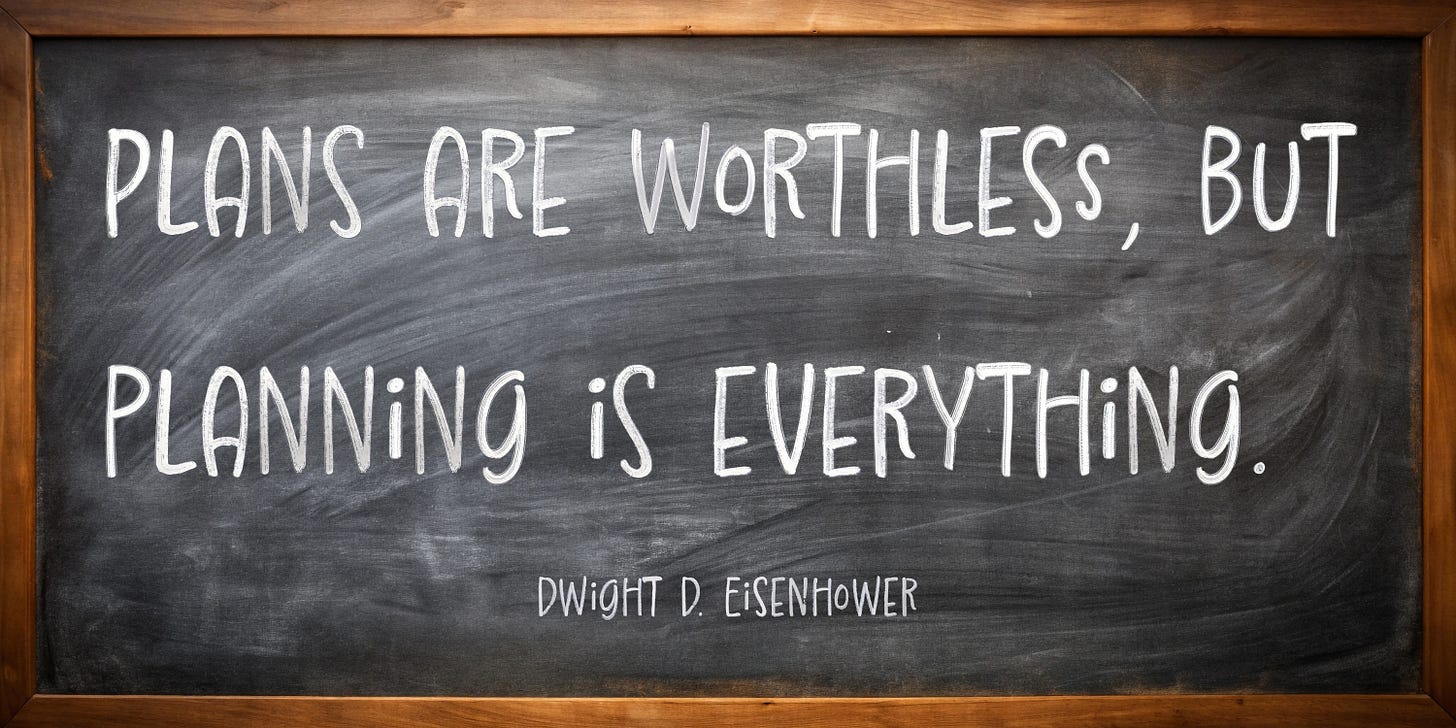If you work in an office, I’d like to formally welcome you to planning season, aka “trying to predict the future using a whiteboard, a calculator, and a vague sense of déjà vu.”
I mean, didn’t we *just* go through this?
We prepare, review, present, edit, defend, and re-edit strategy “decks”; attend endless meeting after endless meeting; model scenario after scenario in spreadsheet after spreadsheet; and engage in budget battles in an attempt to obtain scarce and in-demand resources—all part of a giant and very-not-fun game called “forecasting.”
It’s important. Necessary.
But The Plan itself ? Easily one of the most overrated and underrated documents in business.
Overrated because it’s treated like gospel.
Underrated because “since things always change anyway what’s the point?”
As usual, neither extreme is true. The real story lies somewhere in the messy middle, and it changes constantly.
Consider what Eisenhower once said:
Why?
Because plans decrease in value faster than a new car being driven off a dealer’s lot.
But the process of planning?
That’s training. It builds muscle memory, drives collaboration, and deepens understanding.
The magic isn’t in predicting perfectly—it’s in how we adapt.
Same goes for life. You can plan the vacation, the career, the whatever. And then—just like that—bad weather, a layoff, a toddler uprising during your catch-up drinks with a friend at the local brewery, or a text from your boss asking if you have a minute to chat.
More often than not, The Plan changes. So how do you get back on track? Panic? Ignore it? Adjust?
In business, it means understanding your market, your objectives, and any past/current variances to plan. You cannot improve performance if you don’t understand what’s driving it. This goes for understanding both negative AND positive variances. In the first case, you’ll find what’s misfiring. In the second, you might uncover some advantage to double down on.
During the year, shorten your review cycles. If you’re not measuring and managing results on the regular, something is amiss. Build a channel for real-time feedback. Course correct as needed and talk about what is and isn’t working.
You need to make the plan. But you also need to account for change. Focus less on precision, more on agility. Less on precision, more on directional accuracy. (Better to be roughly right than precisely wrong.)
Pro tip: Engage your people early in building the strategy and the plan. Give them tools to monitor, report, and adjust to ultimately drive ownership, accountability, satisfaction, and a more collaborative culture.
And when you’re not sure what to do, take a few minutes to regroup, and crank this one up:
It’s not about getting everything you want.
It’s not about getting it all right.
It’s about being ready when it goes wrong.
Because while you can’t always get what you want, if you’re ready for change—you just might get what you need.
When your plans collide with reality, does it knock you off your path? This reflection guide might help you get back in balance:



